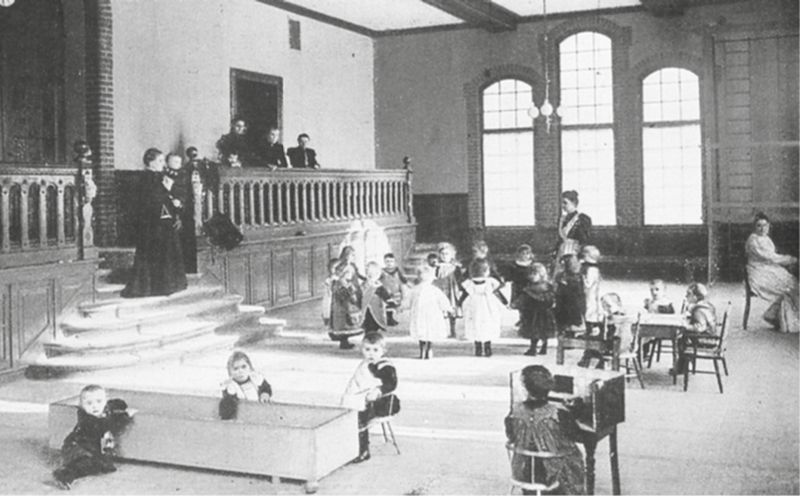Fig.
1 - Giardinaggio al Brooklyn Pratt Institute Kindergarten, 1905.
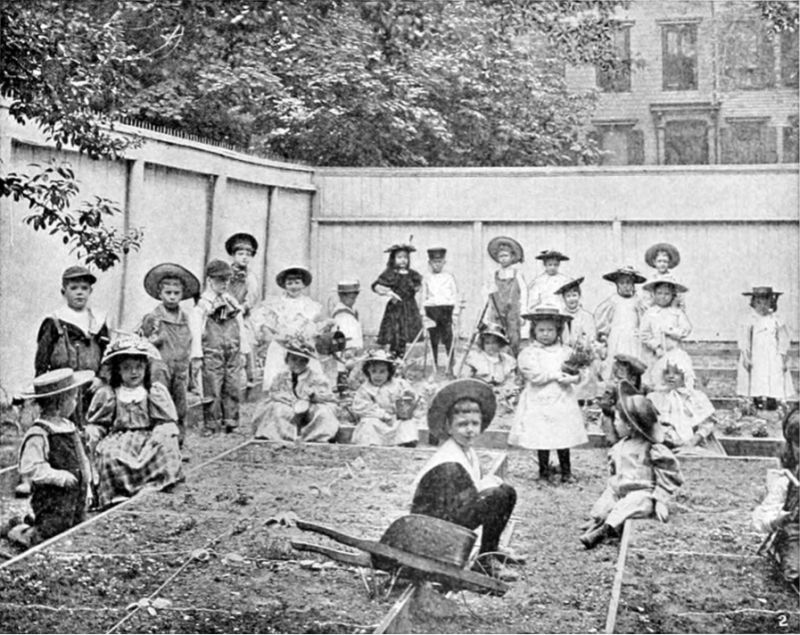
Fig.
2 - Giardinaggio in un Giardino d’infanzia a Los Angeles,
1900.
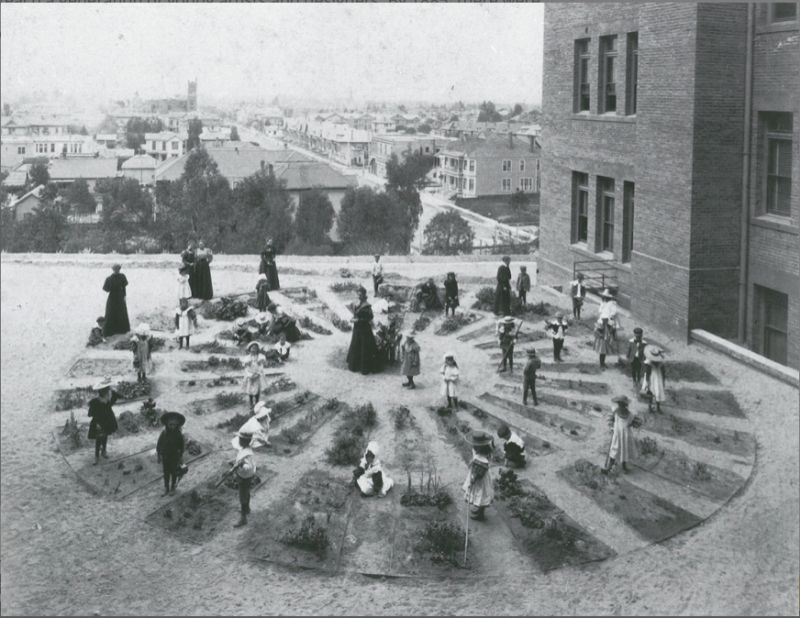
Fig.
3 - Il secondo “dono” di Froebel e il quinto
“dono” di Froebel.
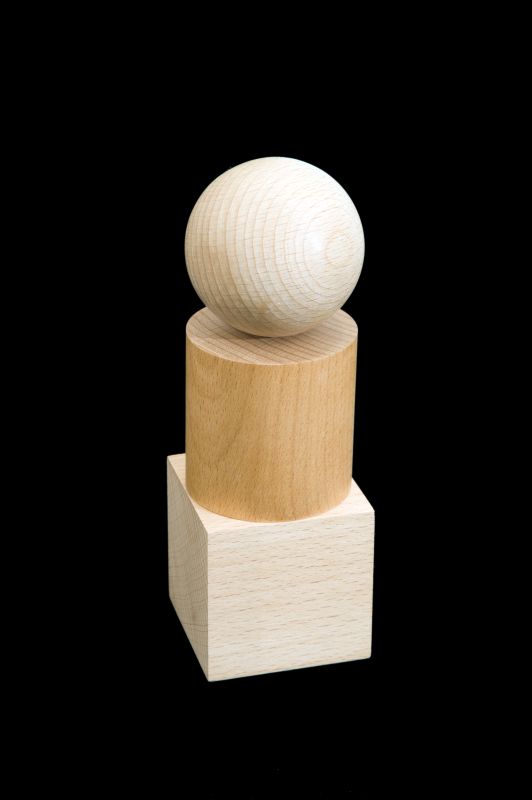
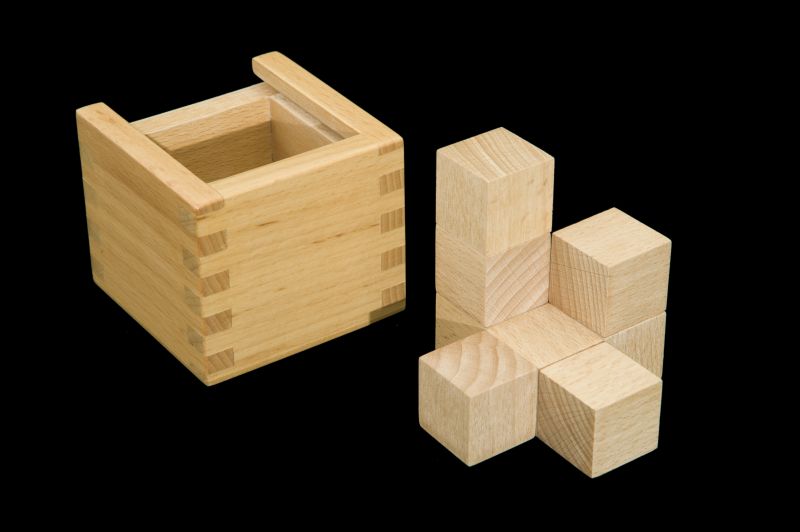
Fig.
4 - Rappresentazione artistica di uno dei primi Giardini
d’infanzia a Watertown nel Wisconsin. Ai lati della cartolina
i ritratti di Carl Schurz e Margarethe Schurz, 1856.
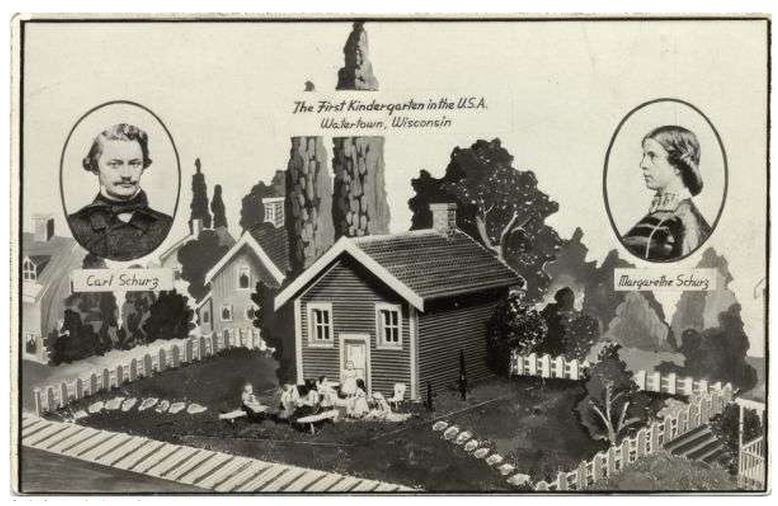
Fig.
5 - Round House a Los Angeles, 1885.
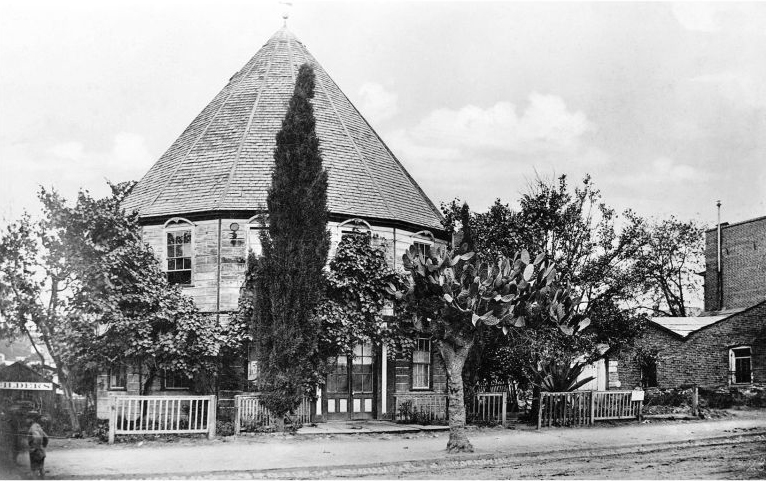
Fig.
6 - Banco della sabbia a Vienna.
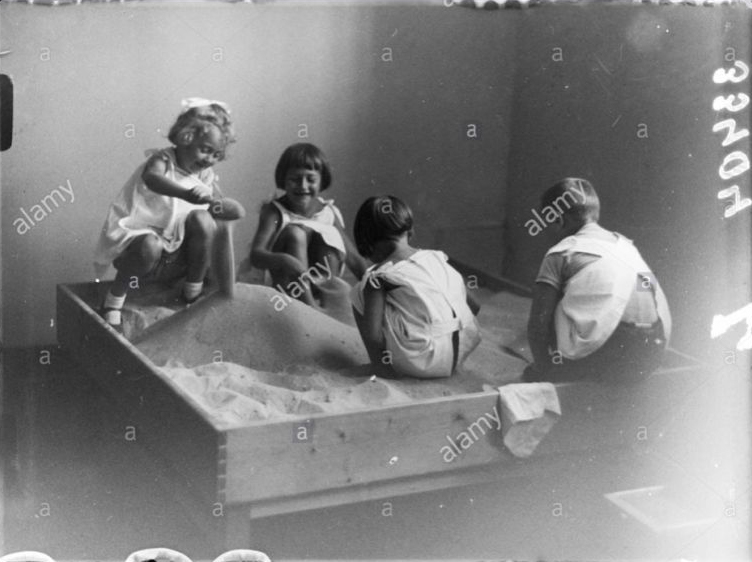
Fig.
7 - Torneo del Corso di Cultura del Corpo: Edros y Oides, Playa de
Ritoque, Quintero, 1979. Archivio Histórico José
Vial, PUCV, Valparaíso.
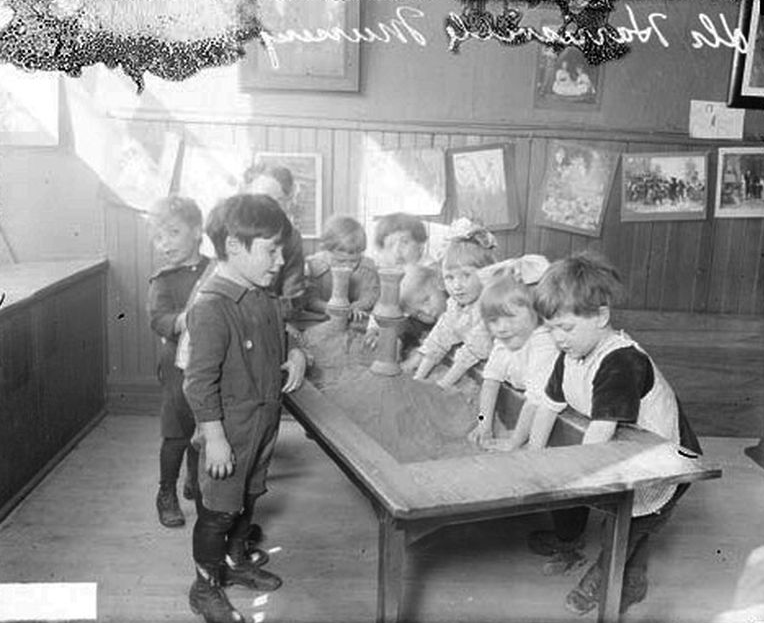
Fig.
8 - La tomba di Emma Marwedel a Oakland, California.
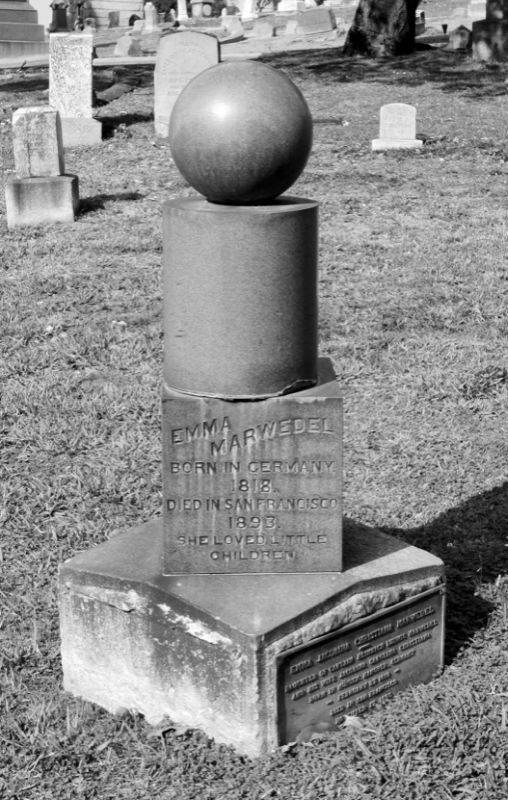
Fig.
9 - Banco della sabbia alla Pestalozzi-Froebel House di Berlino.
